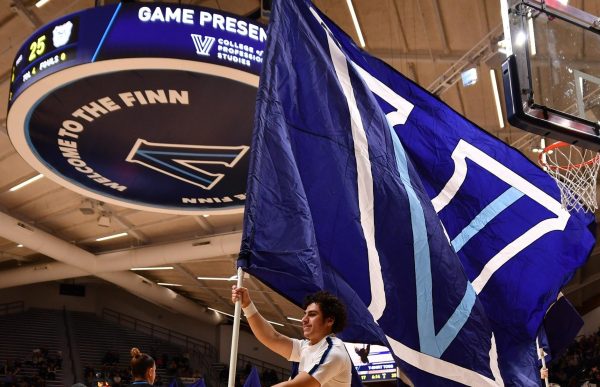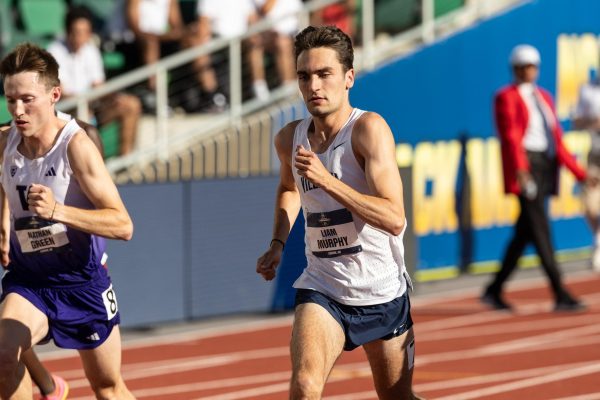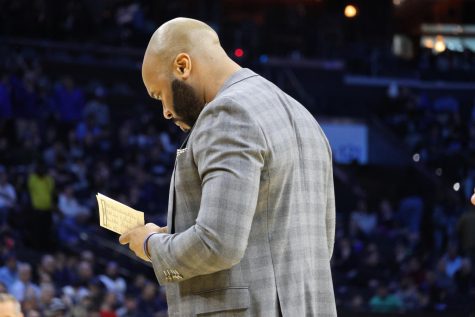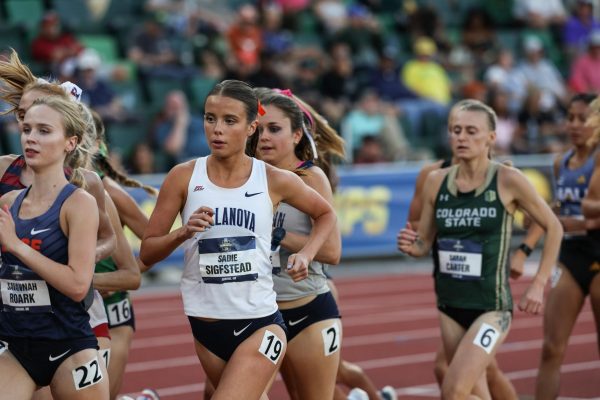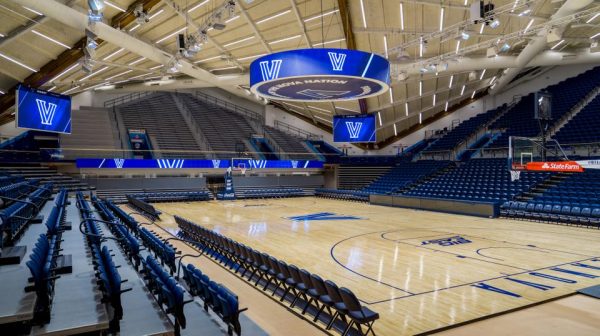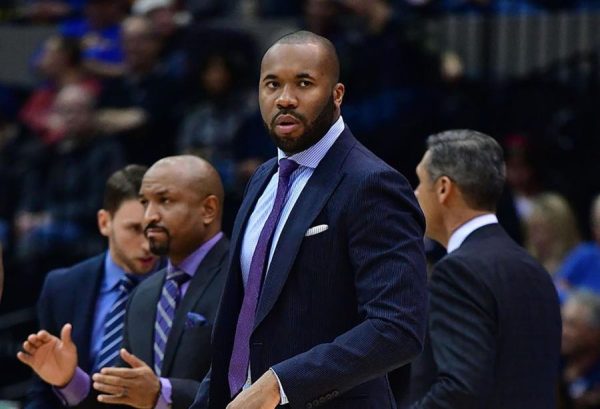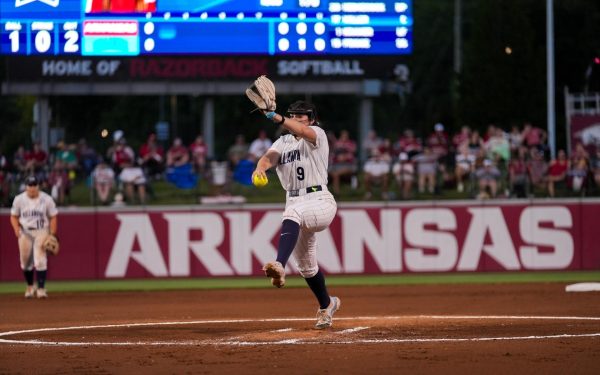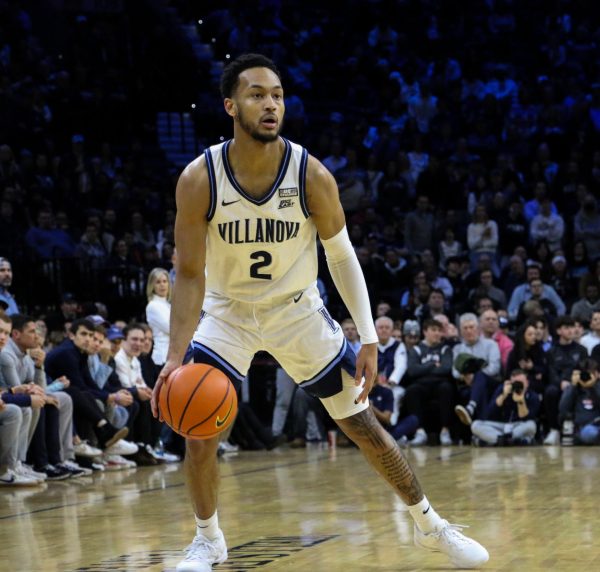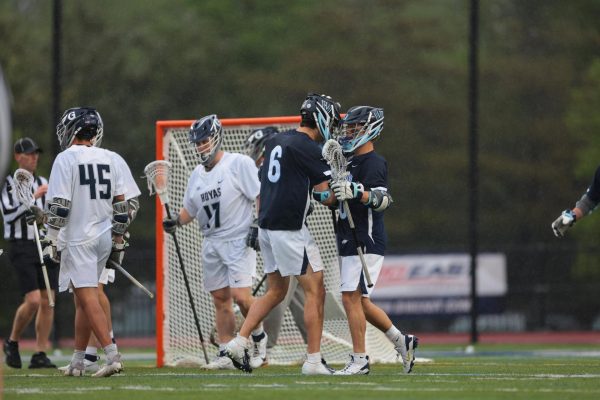Basketball bridges cultural gaps in Haiti
September 29, 2010
If you’ve ever traveled to a foreign country, you probably developed your own definition of the term “culture shock.” Whatever yours may be, mine goes something like this:
Culture Shock (noun): the act of stepping off a plane into the sweltering heat of Haiti, looking around and thinking to oneself, things are very, very different here.
And that’s exactly what I thought this past June, arriving in Cap-Haitien, Haiti, with a group of American volunteers headed for the hospital in a town called Milot. Just over five months after the earthquake that killed an estimated 230,000 people in and around the capital city of Port-au-Prince, Milot’s hospital was still jam-packed with a tiny fraction of the estimated 300,000 people injured in the quake.
Our group included surgeons, doctors (including my mother), nurses, medical students and people just looking to help however they could, such as my sister and myself.
At first, it was difficult to see anything besides the differences. The language was different; Haitian Creole is derived from French, but even those who speak French can barely understand it.
The people looked different; a group of white foreigners sticks out like a sore thumb in Haiti, and you don’t need to understand Creole to know that when you hear the word “blan” (white), they’re talking about you.
And the food was most definitely different; after a couple days I was informed that the meat I had been eating and hoping was beef was, in fact, goat.
But while the differences between Haitian life and the life I was used to were so noticeable and even shocking, what eventually impressed me the most were the similarities.
True, a gas station in Haiti often consists of a man sitting under an umbrella with gallon jugs of gasoline. It’s no Hess station, but it’s a gas station nonetheless.
And while the average American’s job might be a nine-hour day in an office, whereas the average Haitian probably spends that time farming, a day of work to make a living is what it is.
Those similarities might be a stretch, and they took me some time to realize. But there was one that became apparent immediately. Upon arrival at the compound where volunteers lived while working at the hospital, some students who had already been working there for a couple months asked me to play basketball. We walked up the dirt road past the hospital to a school. A giant metal gate led to the horseshoe-shaped, open-air school building, and amid the classrooms was a basketball court. The pavement was cracked and uneven, the backboards were splintered plywood and the hoops were net-less; but a basketball court it was.
A team of Haitians was already waiting, and we started playing. The pickup games I’ve played in usually go to about 15 points — this one went to 50.
Our team of American and Australian volunteers sent subs in and out like a game of tag just to stay alive in the heat and humidity of the Haitian summer. The five locals we played against stayed in for the entire game.
Throughout the game, we argued about who tipped the ball out of bounds. We yelled at each other over travels and fouls — our opponents would call “faute!” on even the slightest contact, a practice frowned upon in pickup games in the States. A crowd gathered to watch, and those who spoke a little English came right out on the court to help translate our arguments. When the ball went out of bounds, little kids scurried after it, each wanting to be the one to hand it back to the tall, lanky white guys playing basketball at their school.
We won a tight contest — the first time the volunteers had defeated the locals all summer, I was told — and by the end of it everyone was exhausted.
It was clear that the volunteers who played basketball with the locals regularly had established a genuine relationship.
The fact that one team was composed of people from some of the world’s richest countries, while the others belonged to one of the poorest and had recently been devastated by natural disaster, had no consequence. We were simply playing hoops.
During my time in Haiti, I watched the volunteer medical staff do the most amazing work I have ever seen.
I watched surgeons repair a leg that had been mangled beyond recognition in a motorbike crash. I saw a team of Texans pull all-nighters molding prosthetic legs for children who had lost theirs in the quake, then heard grown men cry as they tried to talk about those kids taking their (new) first steps. I helped a wound nurse change the bandages on people in the “tent city” of quake victims, still in agony from the injuries they suffered five months earlier.
It’s hard to imagine what it must be like to allow a group of foreigners to take over your hospital — yes, we were there to help, but to put your malnourished child’s life in the hands of doctors who don’t even speak your language is a lot to ask. Much of the time, the tension was obvious — never really a problem, but it was there. Except on the basketball court.
Every second day, provided it wasn’t raining too hard, we forgot about where we came from and just played basketball. Sports are present in every culture, and competition is a language that everyone understands.
I literally witnessed the saving of lives in Haiti. But in terms of forming a real connection with the Haitians, a few hours spent partaking in the universal language of sports were invaluable.
The time my hands have spent tapping keys on a computer is probably comparable to the amount of time the hands of the Haitians I played basketball against have spent laboring with a machete. But no matter what those hands did before they started playing basketball against one another, a high five is still a high five.


